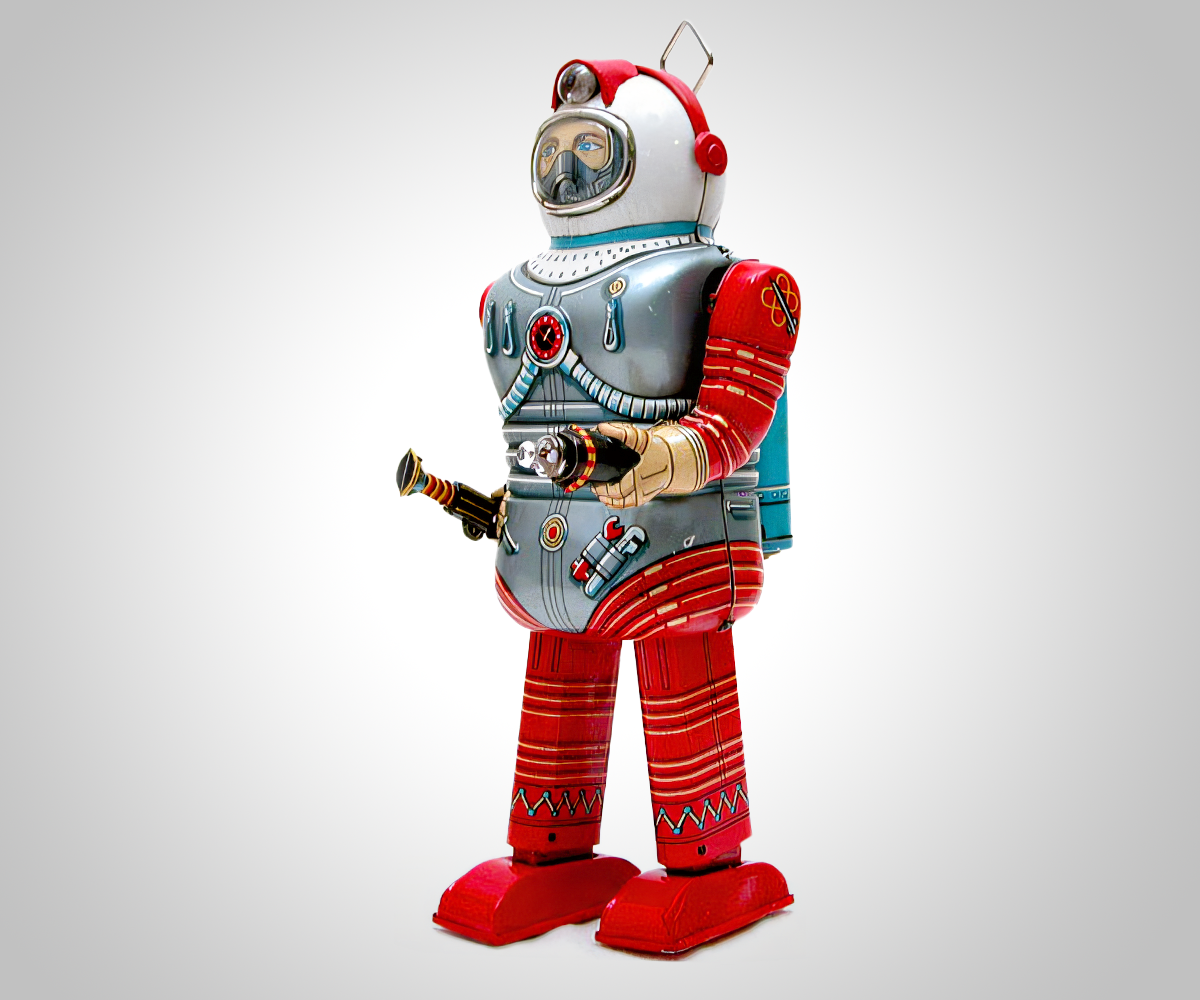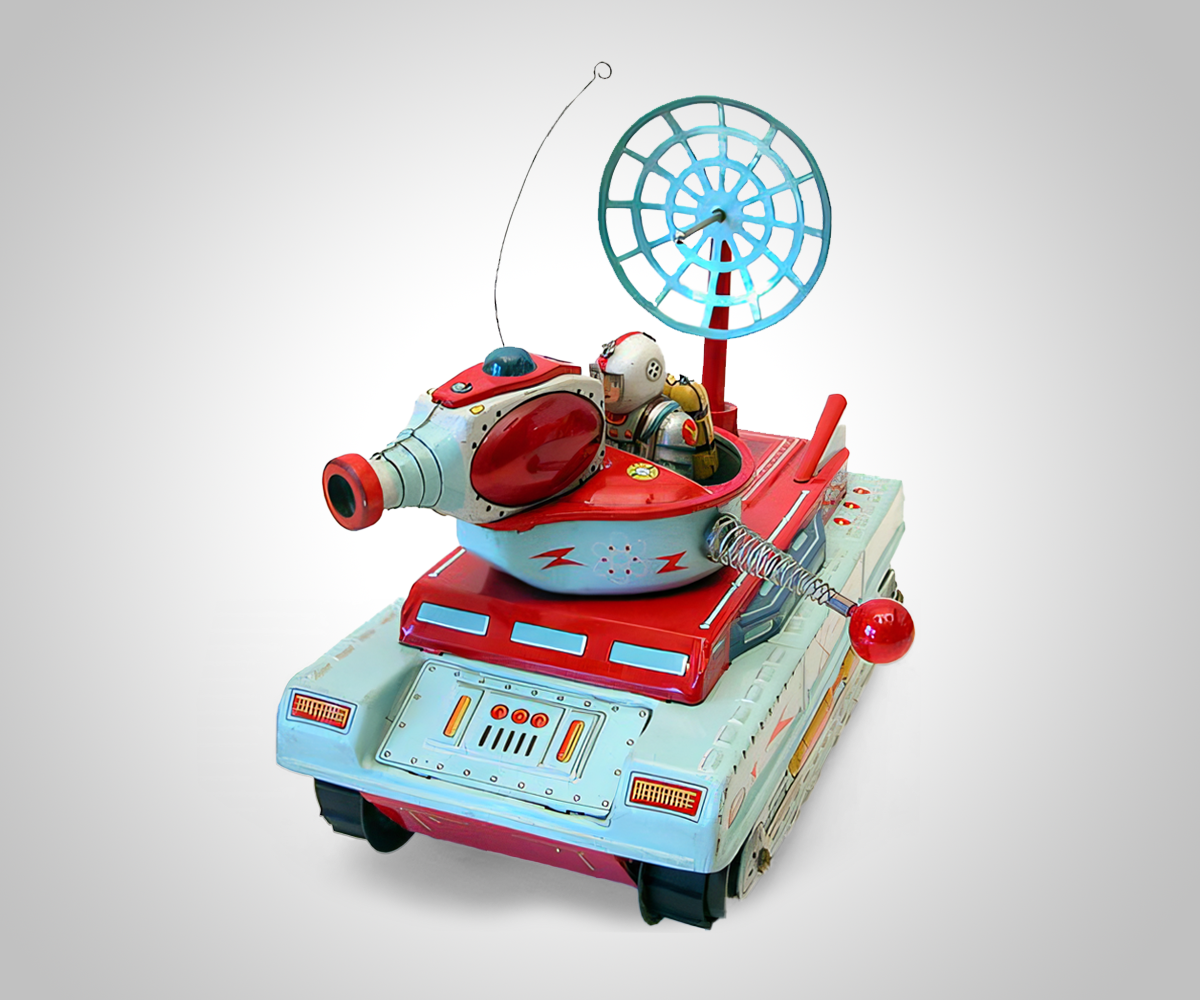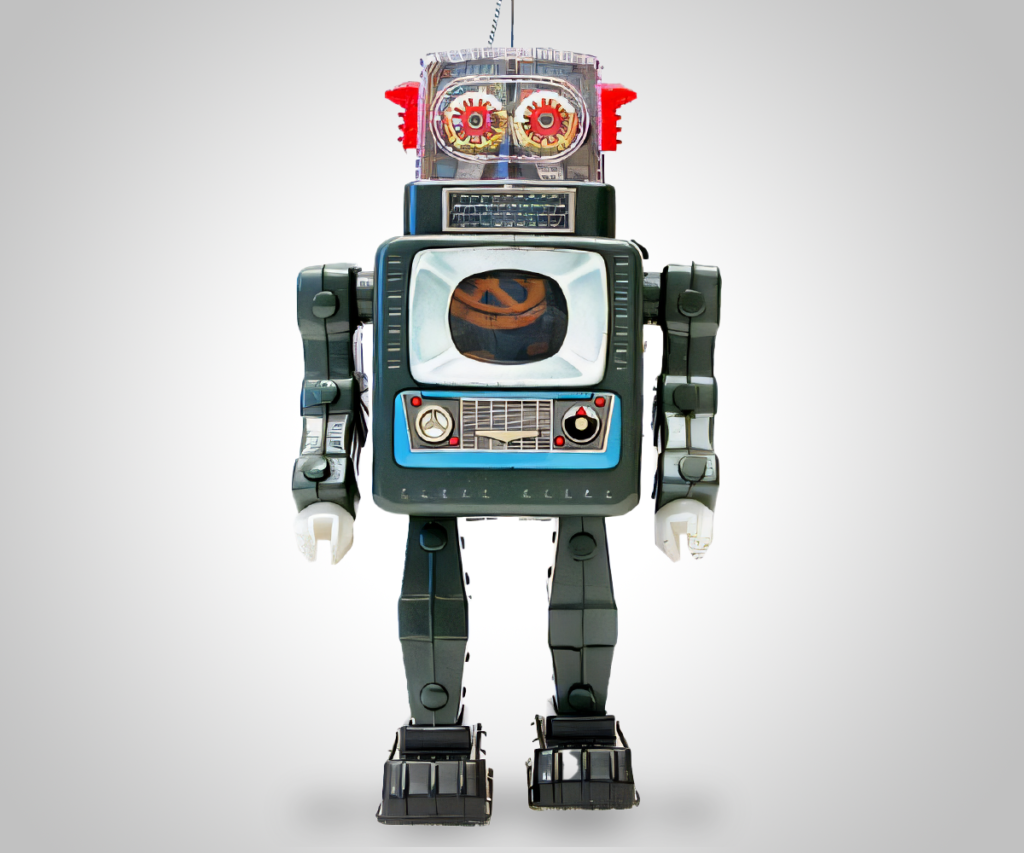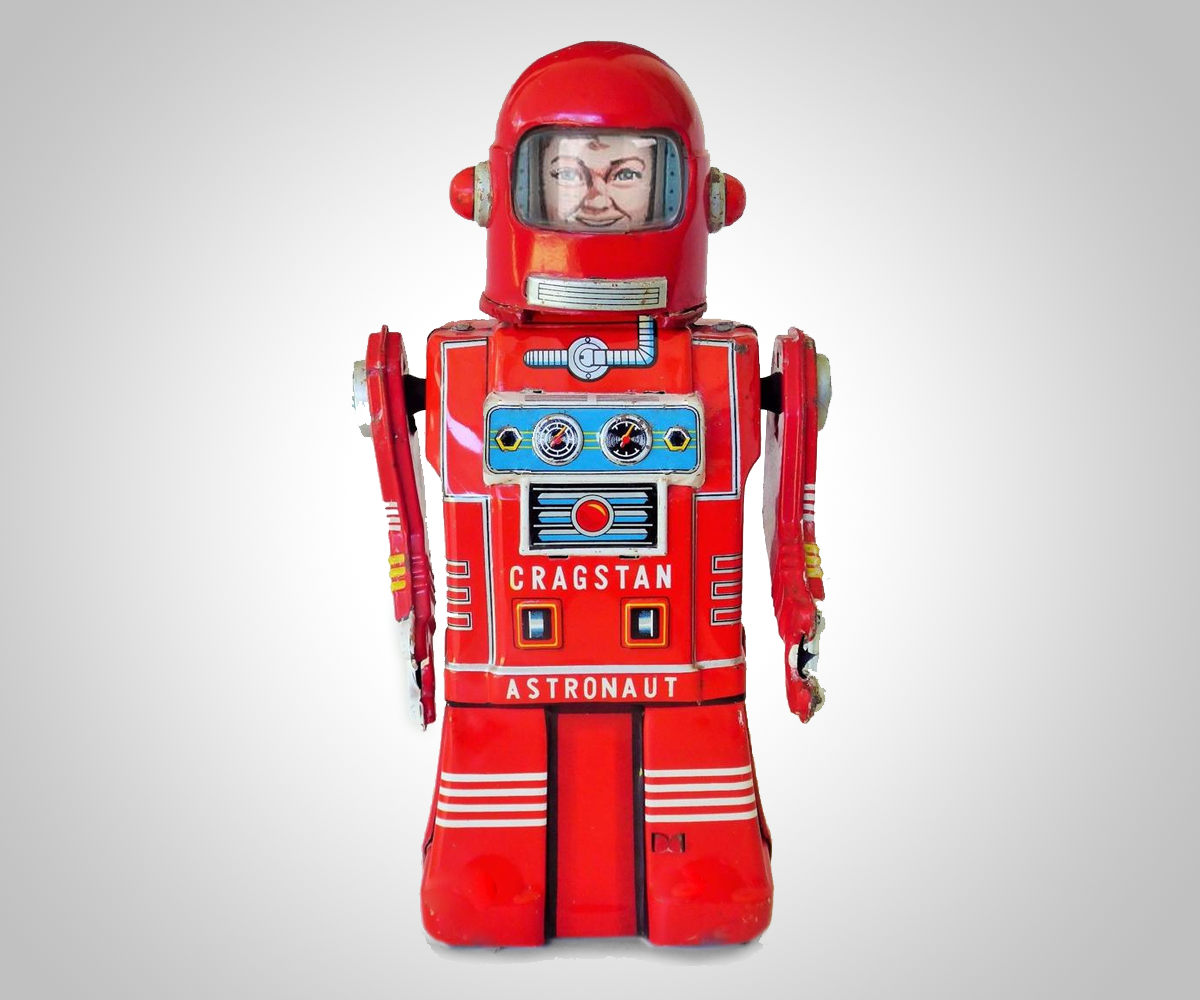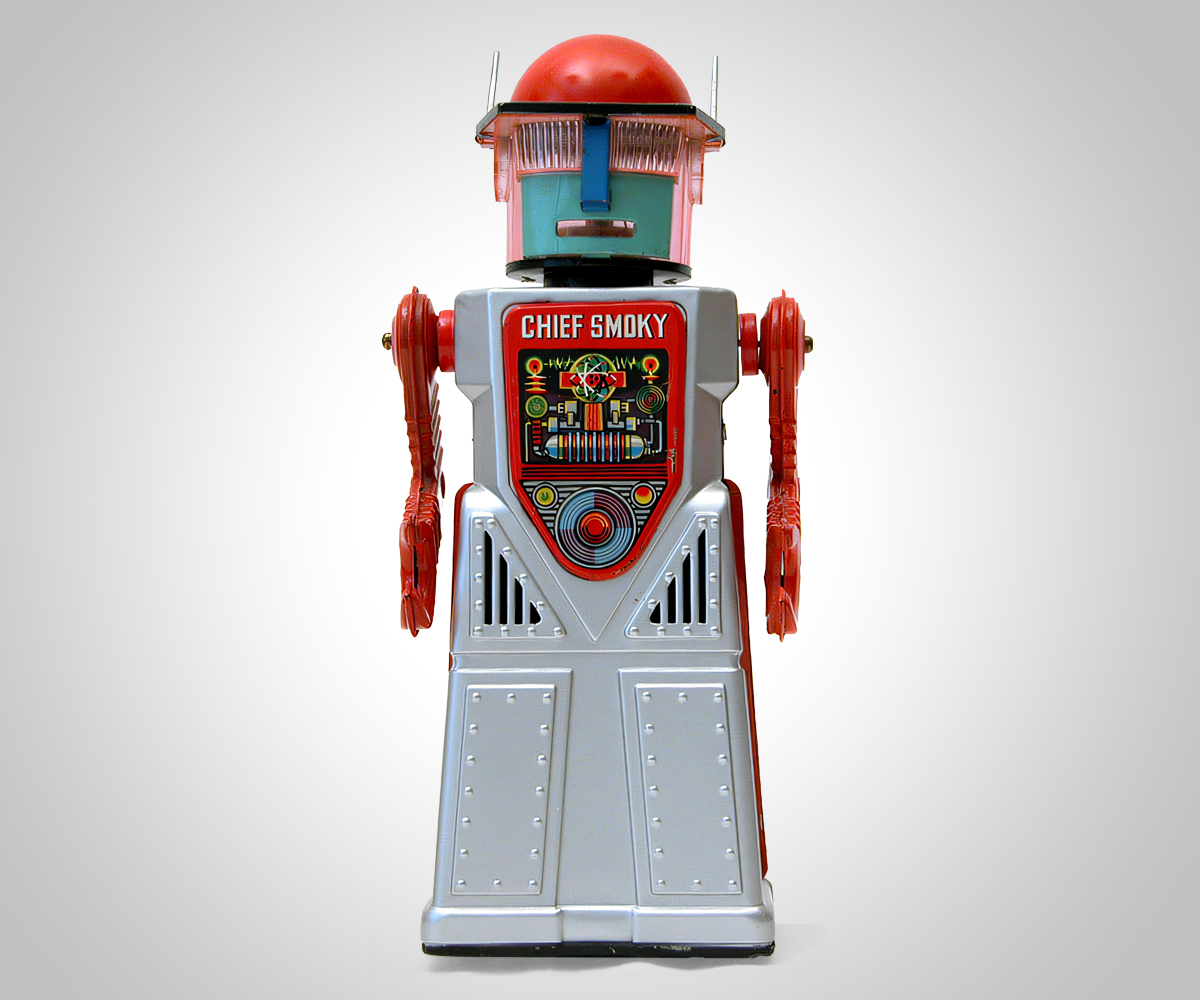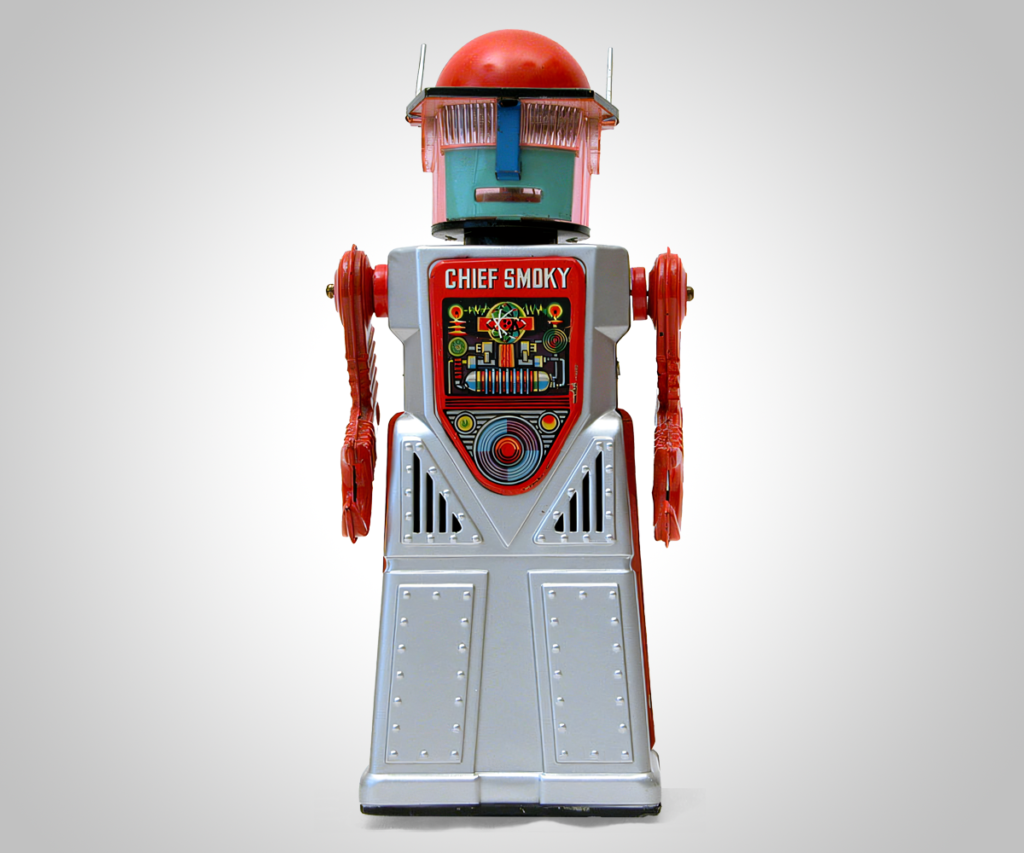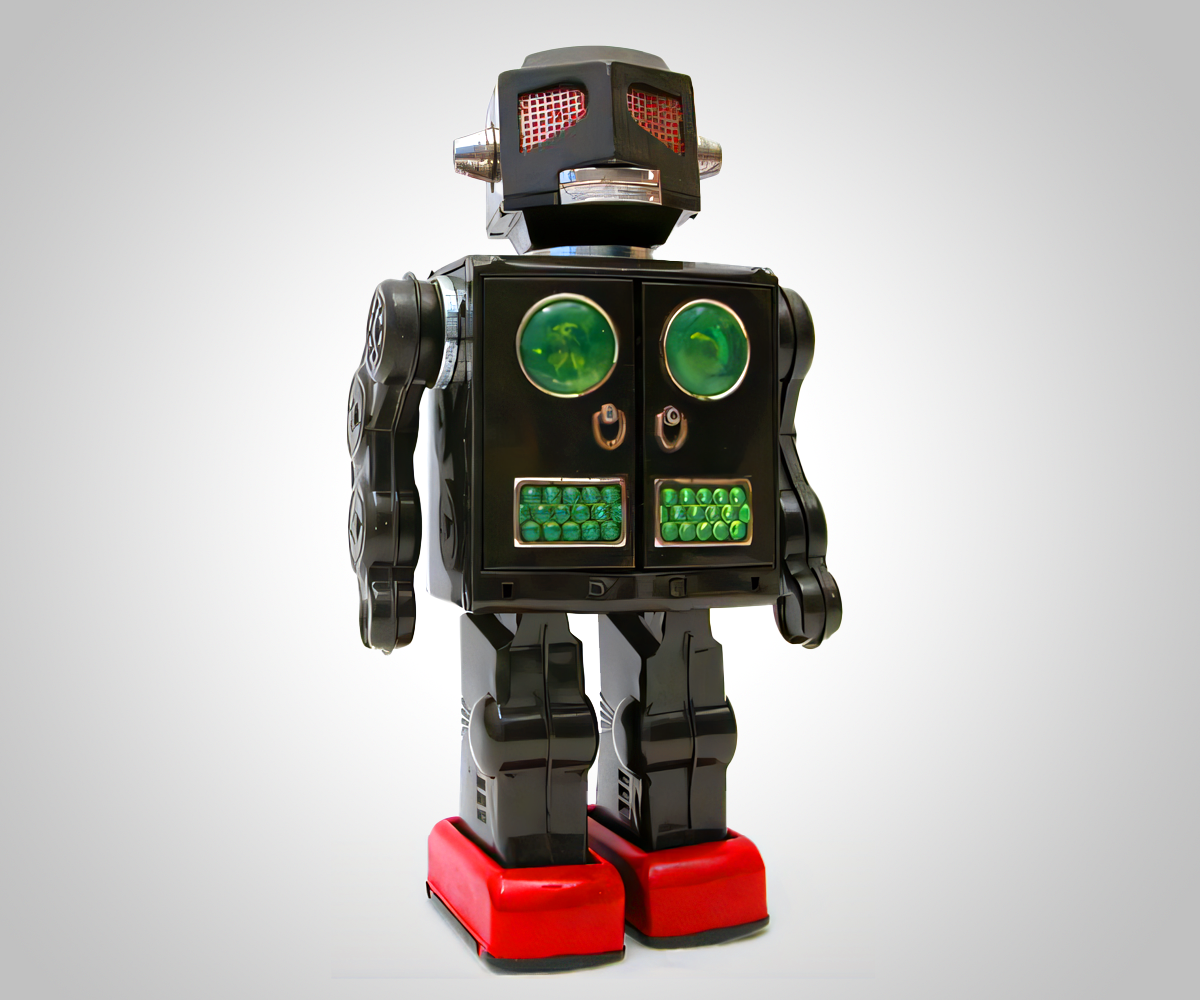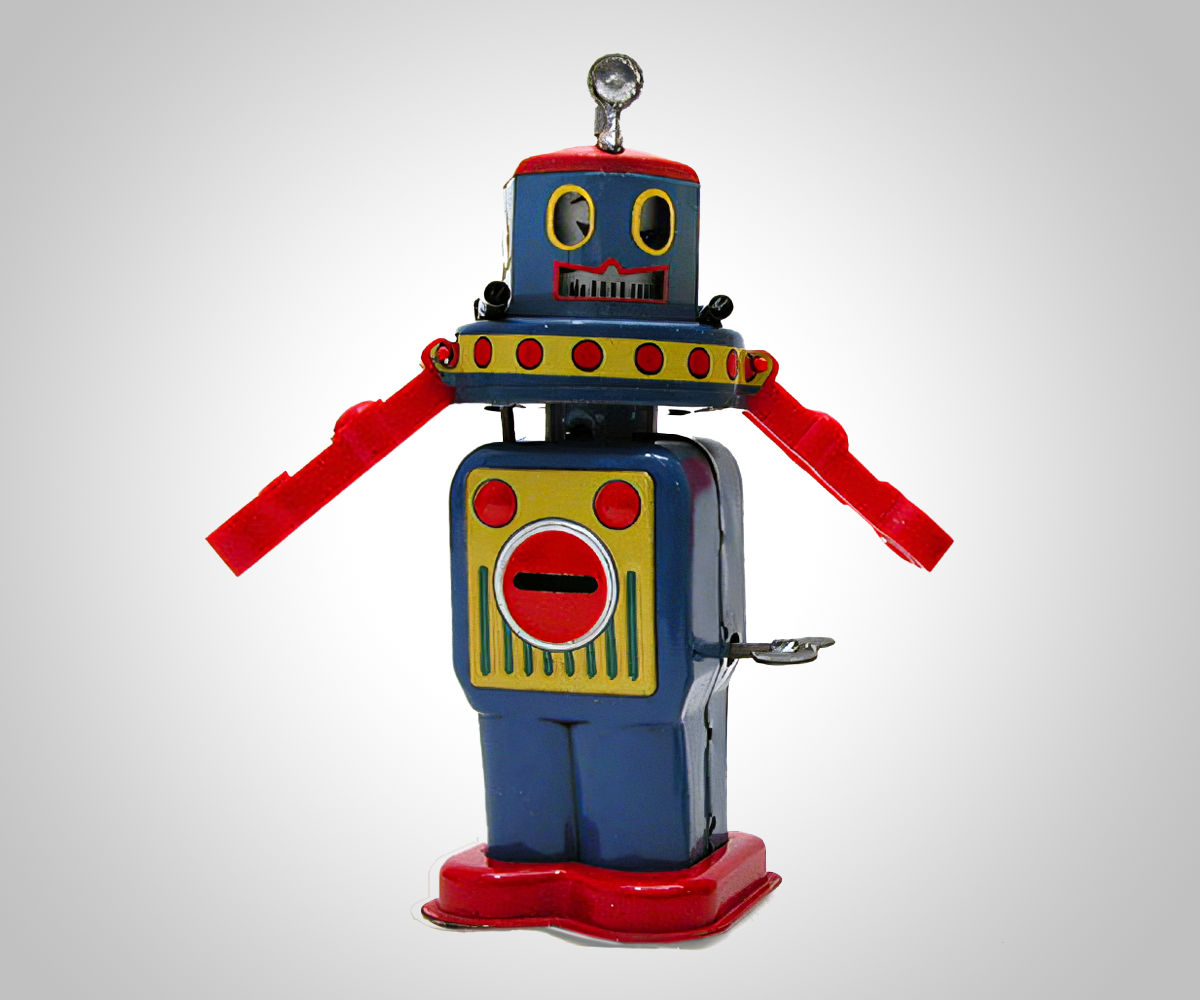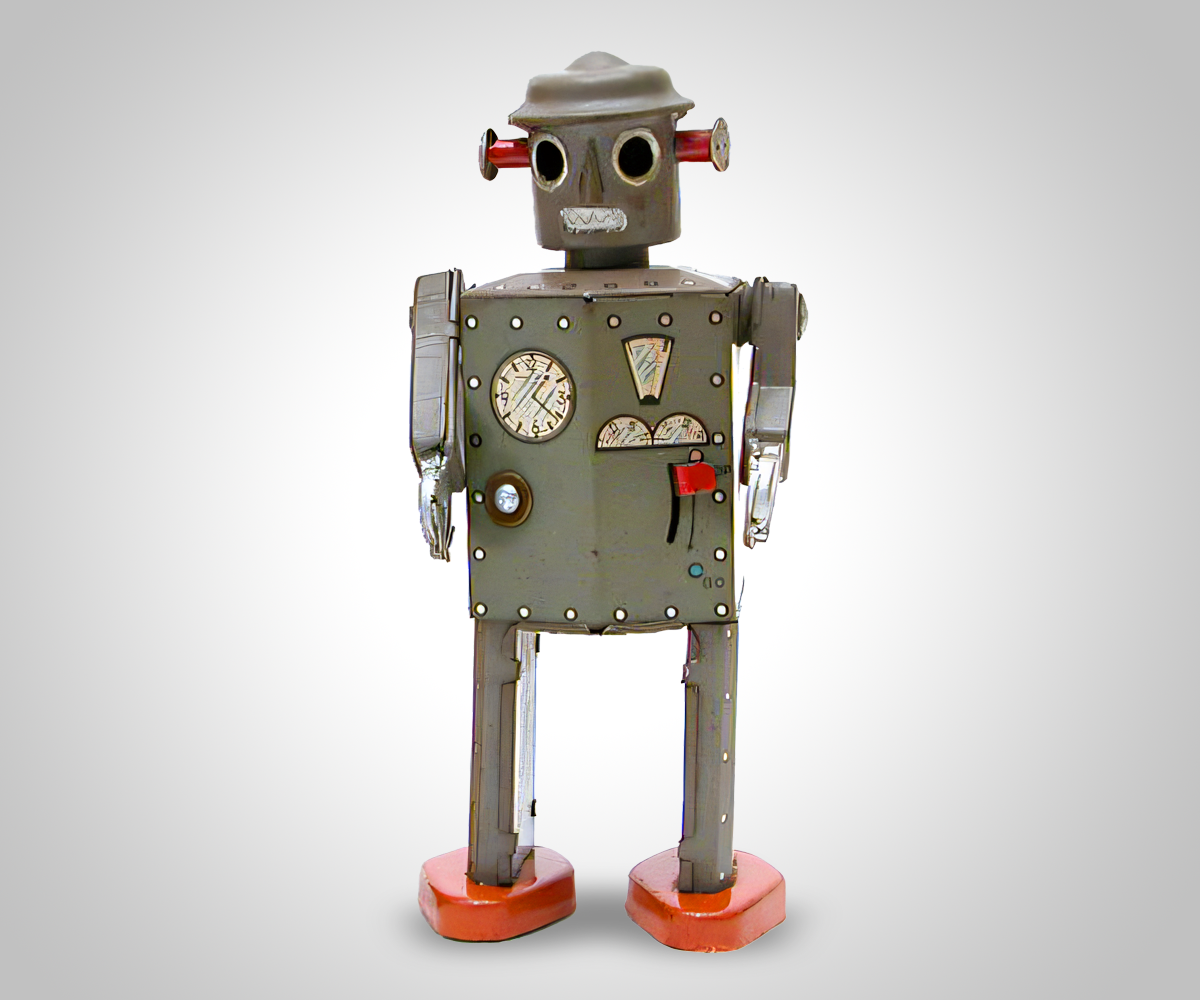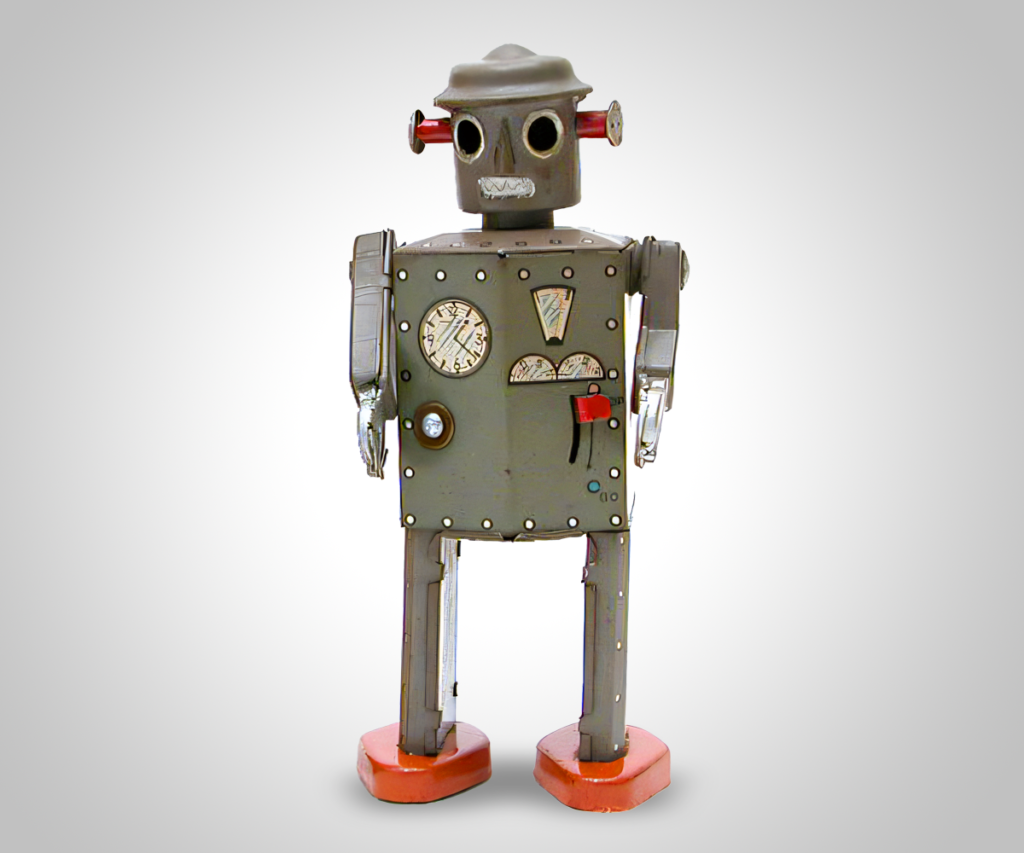Introduced in 1962, Horikawa’s 11 inch Attacking Martian was structurally similar to their Super Astronaut model, albeit lacking the rotational upper torso featured in its counterpart. While walking, its chest compartment would open, unveiling a double laser gun that illuminated with accompanying sound effects. Available in three colors – dark brown, gold, and silver – Attacking Martian exhibited a range of style variations over its extended production run in the 1960s. While early iterations included a chest with opening doors, later versions underwent modifications, with some featuring a larger head and omitting the opening doors. Most models had “fly eyes” but some more rare versions included lighted eyes.
Evolution marked subsequent versions of the robot, with plastic components gradually integrated into its construction, including arms, head, legs, and feet. It was also marketed as Zerox Robot in later variations.



